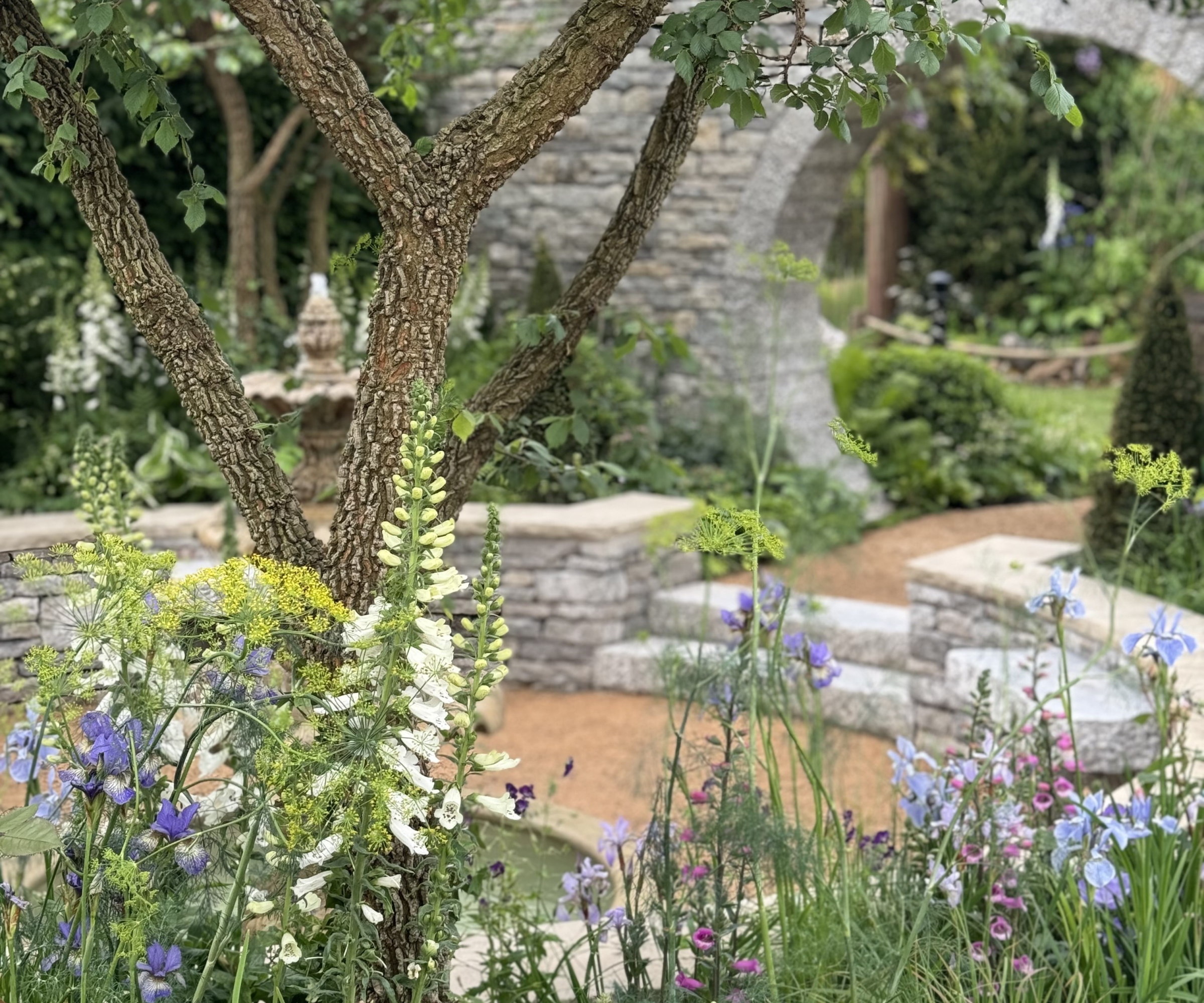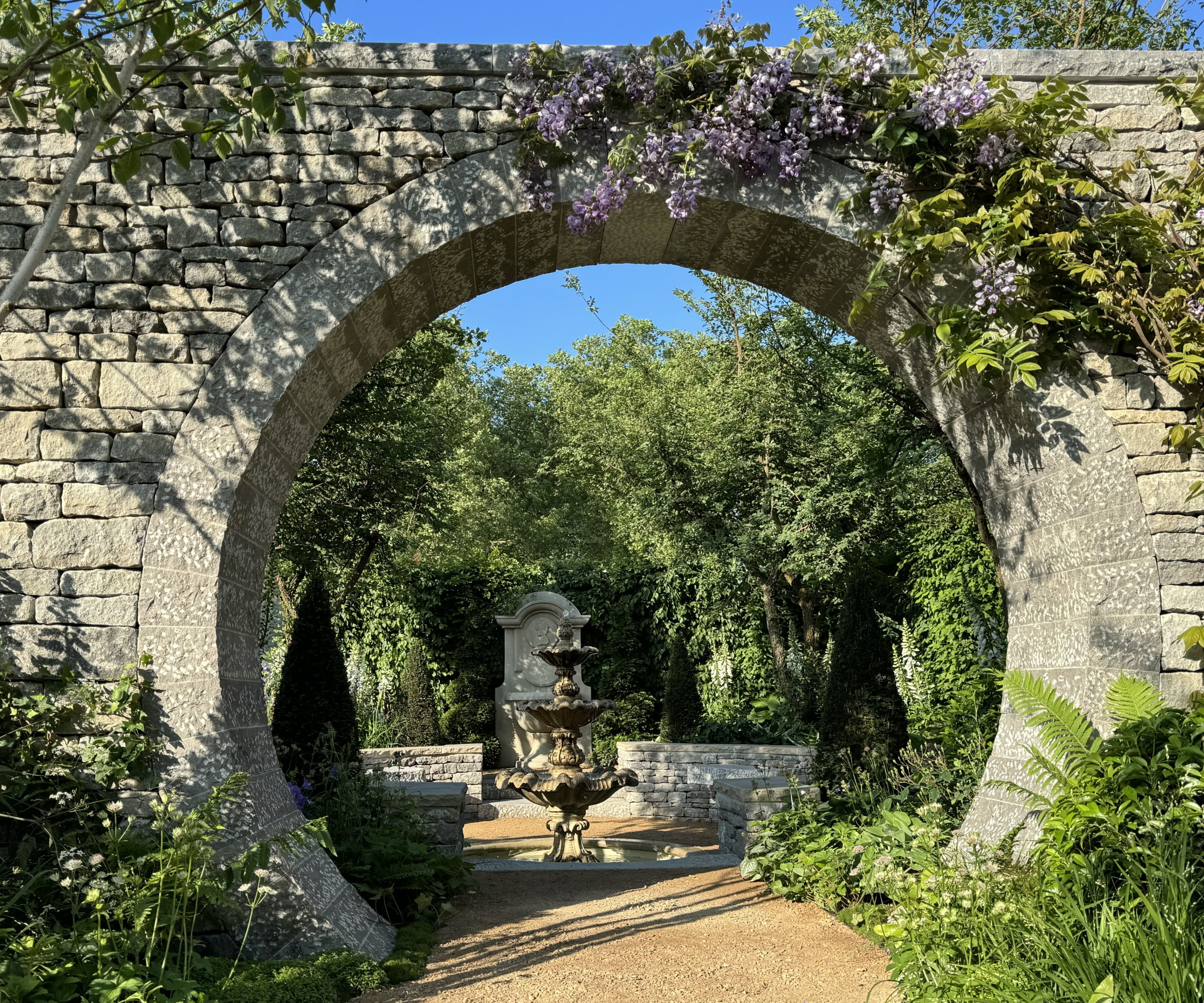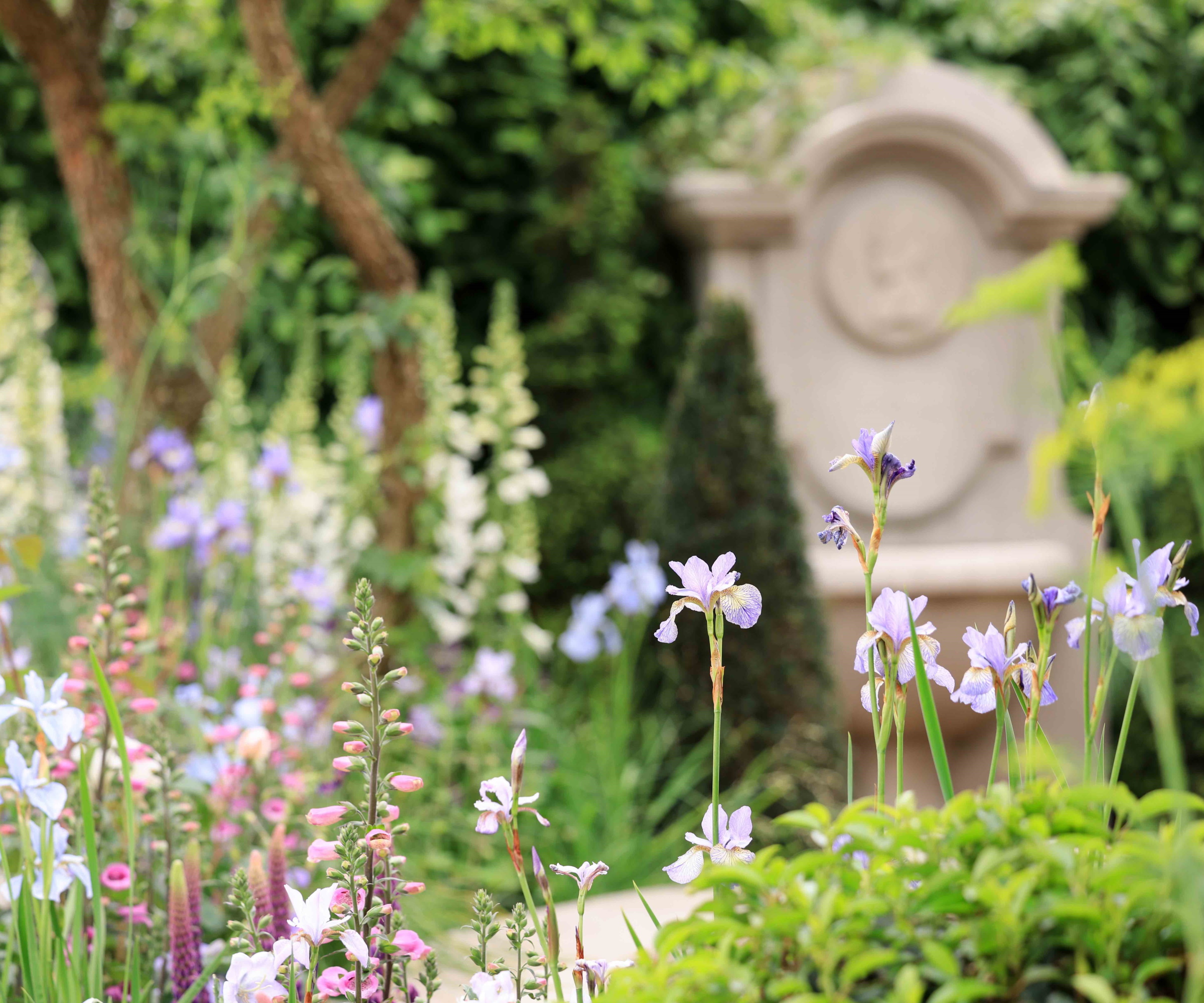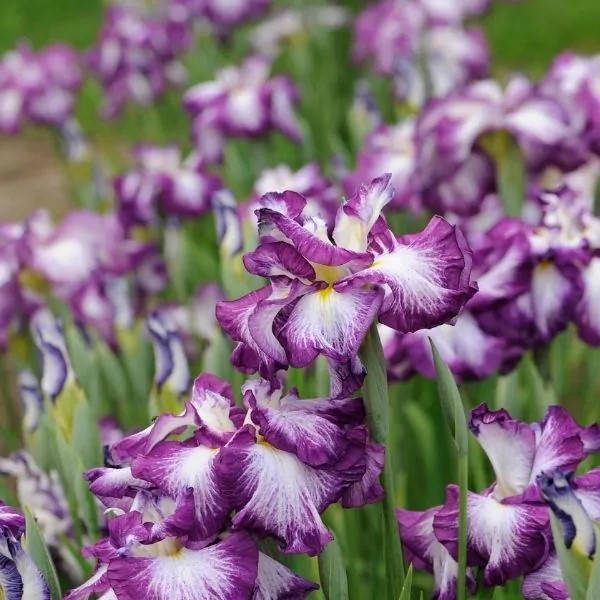'This garden is for the wallflowers' – The Bridgerton Garden captures the romance of the Regency era at the RHS Chelsea Flower Show
The Bridgerton Garden, designed by Holly Johnston, is a secluded sanctuary that tells Penelope Fetherington's transformative story


Of all the beautiful gardens on display at this year's RHS Chelsea Flower Show, one will certainly appeal to fans of the award-winning television drama, Bridgerton. Designed by first-time Chelsea designer, Holly Johnston, The Bridgerton Garden, tells the story of Penelope Fetherington, who transforms from a wallflower-like character to a confident and commanding presence in the Netflix show.
Drawing on the Bridgerton Regencycore gardens trend, this Chelsea sanctuary garden explores themes of hidden identity, feelings of invisibility and the duality of character. The Bridgerton Garden is small but certainly packs a punch, with unique and eye-catching hard and soft landscaping elements on display.
Here, we share some of the key features of The Bridgerton Garden and provide details on the planting used. So, if you are looking for backyard ideas this year, consider creating a Bridgerton-inspired space at home.

The Bridgerton Garden at the RHS Chelsea Flower Show
Inspired by Netflix’s hit series Bridgerton, The Bridgerton Garden fuses Regencycore landscape and planting ideas to create a romantic, secluded space. Using some of the best plants from the RHS Chelsea Flower Show including climbing wisteria vines, rambling roses and colorful foxgloves, this garden is a tranquil retreat.
Key features of The Bridgerton Garden

'The garden is separated into three rooms,' says designer Holly Johnston. 'Standing at the front of the plot, visitors will see a moongate that beautifully frames the entrance to the garden.'
'The moongate is the most iconic part of the garden,' Holly says, 'and is symbolic of new beginnings.' This entranceway was a deliberate design feature, 'forcing visitors to step in and through the moongate, and transporting them into a personal, secluded sanctuary.'
Drawing on courtyard garden ideas, this gate leads to a sunken space with a seating area and a Regency-style three-tiered water feature. 'Here, in the center of the garden, is where I pictured the character of Penelope sitting and sharpening her Lady Whistledown quill,' Holly continues. Stone seating is positioned around the water feature, inviting visitors to stop, pause and reflect in this quiet and contemplative space.
Design expertise in your inbox – from inspiring decorating ideas and beautiful celebrity homes to practical gardening advice and shopping round-ups.
At the end of the garden, in an enclosed space, a hand-carved sandstone sculpture is engraved with a phrase that cements Penelope’s growth: Even a wallflower can bloom.
Many of the structural elements in the garden were sourced from reclamation yards. 'The circular economy is important to me,' Holly says, 'and if we reclaim items, then they come with a cultural heritage and a story of their own which really can add to the narrative of a garden.'
'The Regency fountain and stone plinth in The Bridgerton Garden are upcycled items, and they all add to the story-telling.'
If you want to reclaim items to use in your garden, Holly recommends 'taking time to find the right piece... there will always be something out there that is perfect for your garden, you just need to find it.'

Holly Johnston is a garden designer trained at the prestigious English Gardening School at the Chelsea Physic Garden, graduating with distinction and first in her class. She is passionate about sustainable design and is often inspired by the rolling landscapes of her homeland in New Zealand.
Planting used in The Bridgerton Garden

The planting in The Bridgerton Garden reflects the themes of secrecy, growth, and desire. Height and shelter is provided by dwarf field elms, Ulmus minor var. suberosa, commonly referred to as cork-barked elms. The gnarled back is aged and unusual, and the canopy offers protection and enclosure around the seating area.
Topiary is also a feature of the space, with clipped domes and pyramidal shapes adding formality to the planting. This contrasts effectively with the loose and textural planting.
The designer purposefully chose planting that evolves from shade on one side to light on the other, referencing the development in Penelope’s character, full of hidden meaning and intrigue, and seeking to fully express oneself.
'Penelope Featherington’s character has grown from an almost hidden and overlooked character to a young woman who isn’t afraid to know and celebrate herself,' Holly says. 'The shaded space down one half of the garden alludes to the themes of mystery, turmoil and defiance with layers of ground cover, ferns and ivy representing a woven network of secrets.'
In contrast, the flamboyant, brighter planting has a striking color palette, which 'speaks to the evolution of Penelope's character,' Holly adds. There is an informal mix of colorful climbers, shrubs, perennials and grasses designed to reflect a growing sense of confidence and ease.
Colorful perennial planting includes the striking blue flower of Iris sibirica 'Perry's Blue', as well as Lupinus ‘Masterpiece’, which produces classic lupin flower spikes but in a rich, deep mauve. Lupin plants are available from Nature Hills.
Roses are often seen in Bridgerton, trailing over pergolas and archways as the characters walk slowly through beautiful gardens. Within The Bridgerton Garden, rose garden ideas are important, and Rosa ‘Desdemona’ is used to great effect. 'This rose has been chosen to provide a sense of romance and enchantment around the moongate and dry stone walling,' Holly says.
In addition, English ivy, Hedera helix, is important in the garden, adding 'charm and intrigue as it snakes up tree trunks and scrambles over stone. It provides layering to the planting, helping to develop a sense of place, but also building on ideas relating to secrecy that the shade planting is intended to represent.'
The planting also includes a variety of ferns, largely inspired by Holly’s childhood in New Zealand. One fern that was included was Dryopteris, a vigorous, semi-evergreen fern with intricate arching fronds. Ferns are available to buy from Nature Hills.
FAQs
What climbing rose would be recommended for training over a fence, trellis or pergola?
Romantic roses are a key feature of The Bridgerton Garden, and growing these blooms is a great way you can add color and scent to your yard. Some of the best climbing roses have prolific, long-flowering blooms, and your local garden store will be able to advise on the best varieties for your region. Two of my favorites are 'New Dawn' and 'Constance Spry', which have bright and brilliant pink blooms that will quickly fill garden walls and fences.
If you are a fan of the hit show, Bridgerton, consider adding some Regency elements to your yard this year. Topiary shapes, trailing roses and trickling water features are central aspects of this brilliant garden, and could be mimicked in any garden, big or small.
For planting inspiration, see our guide on cottage garden plants, to add traditional favorites to your borders this year.

Thomas is a Content Editor within the Gardens Team at Homes and Gardens. He has worked as a professional gardener for both public spaces and private estates, specializing in productive gardening, growing food and flowers. Trained in Horticulture at the Garden Museum, he has written on gardening and garden history for various publications, including The English Garden, Gardens Illustrated, Hortus, The London Gardener and Bloom. He has co-authored a Lonely Planet travel book, The Tree Atlas, due out in 2024.
